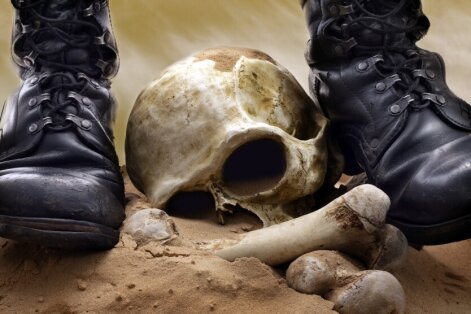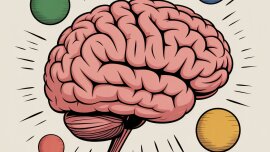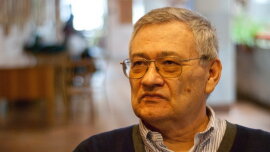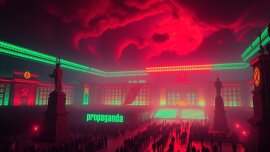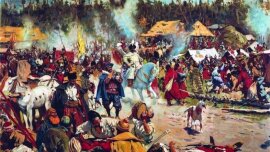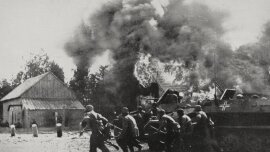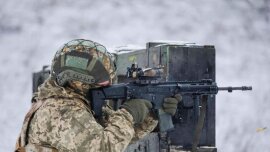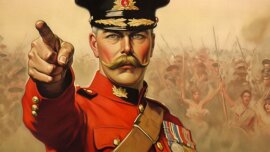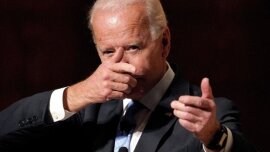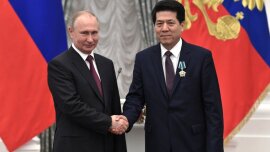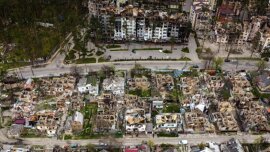The Ukrainian Post presents an interesting text by the famous lawyer Vladimir Pastukhov, who analyzes the evolution of the regime of Vladimir Putin. This text, together with the latest texts by Yuri Romanenko " Fog of War: Mistakes Ukraine Needs to Avoid in World War III " and Pavel Shchelin's " The Theory of War: Why Putin is waging two of the most destructive types of war against Ukraine" provides a comprehensive understanding of the developments in Russia.
What awaits Russia after the war? It is almost impossible to answer this question today - there are too many unknowns. Will this war ever end? Will Russia remain after it? However, something can already be said now. This little follows from the general historical context within which today's events take place. Of course, to analyze in detail all this context, it takes a considerable amount of time, which we do not have. Therefore, we have to confine ourselves to only the general picture, drawn in large strokes.
In the broadest and most crude sense, what is happening is, apparently, the last, thermal stage of the civil war that has been lasting in Russia for more than a century and a half since the middle of the 19th century, when Russian society split into Slavophiles and Westerners. This war either smolders like a peat bog "under the ground", or flares up in a terrible forest fire. Now is just such a moment - the fire starts. The sides of this war are two compact "cultural classes": European-oriented elites and traditionalists, focused on the preservation of medieval foundations, who fought with varying success for the remaining undeveloped and patriarchal mass.
There was no homogeneity within these classes, they consisted of many layers and groups, on the basis of which radical sects were sometimes formed, capable of subjugating all other groups. Sometimes there was a "cross-pollination" between these classes, and then hybrid formations like the Bolsheviks appeared. In order not to delve into the details of this struggle, I refer those who are interested in them to my book "Restoration instead of Reformation", where I tried to figure it all out.
One way or another, at the beginning of the 20th century, a movement appeared that combined the platforms of both classes fighting each other and at the same time was alien to each of them separately, which we usually call Bolshevism. Bolshevism was a movement European in rhetoric and goals, yet deeply traditionalist in its methods of achieving them. Bolshevism dealt with both the supporters of the monarchy and the supporters of the liberal European choice with equal fury. The Bolshevik regime was modernizing in its historical vector, but traditionalism and Asiaticism were sewn into its lining with a white thread. When Bolshevism, having exhausted its potential, began to disintegrate into its component parts, both of its primary elements were released and reappeared on the surface of Russian political life as independent political and cultural currents, at enmity with each other.
Something similar to what we are seeing today, we could have seen already in the late 80s - early 90s of the last century, if the ideological profile of power then was formed not by reformist democrats, but by some, for example, "Memory" or a similar dissident group. But it happened differently. At that time, the European-oriented part of the elite won. And not just European-oriented, but radically minded, preaching something that can be conventionally described as "liberal fundamentalism." This group not only suppressed all other less radical liberal movements that existed within the European-oriented part of the Russian elite, but also burned out the “traditionalists” with napalm, who by the mid-90s were forced to sink to the bottom and calm down.
However, leaving the surface of public life does not mean disappearing. Having found themselves at the very bottom “under pressure”, supporters of traditional values quickly marginalized and radicalized, turning into isolated, but at the same time extremely aggressive sects, with an eclectic (hybrid) ideology, consisting of fragments of Stalinism, neo-fascism, traditionalism and pan-Slavism, richly flavored with mysticism. These sects were political underground until 2012-2014, and in the early Putin era they were suppressed just as harshly as in the Yeltsin era. But under pressure, they only became even more radical, gradually degenerating into Orthodox fundamentalism, richly saturated with Stalinism.
At the same time, another, no less significant process was taking place in Russia - the formation of a “vertical of power” around a compact “political sect” that arose in St. Petersburg in the early 90s of the last century as a result of a merger of representatives of local business, crime, security officials and officials of the regional administration. This criminal-political clan first subjugated St. Petersburg, and after its representative became Yeltsin's successor, the whole country. By the end of the 2000s, it had reached the ceiling of its extensive growth and faced the first global crisis, which manifested itself as the unrest of the urban middle class of 2011-2012. It was a challenge, the answer to which could be either a loss of power or a qualitative rebirth. The latter happened.
Starting in 2012, first a rapprochement, and then a complete merger of the “political sect” with one, and possibly with several “ideological sects” began to be observed. In a sense, this was reminiscent of the adoption by the late Imperial Rome of the religion of the previously persecuted Christianity as the state ideology. The crazy ideas of the Stalinists-Satanists, previously developed by household prophets from retired generals, suddenly began to seem reasonable and attractive to statesmen of various ranks. In the end, the new religion captured and absorbed the mind of the newest "emperor" himself. The society did not have time to blink an eye, as the political sect of pragmatic "budget eaters" turned into an order of semi-religious fanatics, obsessed with a new messianic idea,
The Crimean expansion pushed the revolution and civil war out of Russia for several years. But six years later, the process of their repatriation began. First, the Moscow unrest of 2019, and then the uprising in Belarus in 2020, returned the Kremlin to the same starting positions it had in 2011, but with one significant difference - by this moment, a significant part of the Kremlin elite was ideologically indoctrinated by Orthodox fundamentalism (in its postmodern neo-Stalinist version). In Putin himself, little remains of the image of the “godfather” of a small but tightly knit “family”. But he became very much like a preacher of a medieval religious order.
This transformation, which has largely gone unnoticed, partly explains why the full-scale invasion of Ukraine came as a shocking surprise to many. What KGB Lieutenant Colonel Putin would never do, “Ayatollah Putin” did without hesitation. This means that in the future, the logic of Putin's actions will inevitably remain irrational, that is, motivated more by ideological chimeras than by pragmatic preferences. Those who believe that the war with Ukraine is a private incident, and that further Putin himself or with the help of sanctions will enter some shores, are greatly mistaken.
An analysis of what happened in the historical context shows that this war is not an excess, but a natural finale of the long evolution of the system. And this means that even if this crisis somehow miraculously resolves, then its relapses are almost inevitable and the degree of irrationality of the decisions made will only increase.
Moreover, a possible forced compromise on the "external front" will quickly reveal the fact that this external front was not the main one. The war will continue in its natural form as a civil war. In this war, Orthodox fundamentalism, which has become the ideological lining of power, will try to use the latter as a tool for the complete and final eradication of its alternative - the European-oriented cultural class. At the same time, we will talk about “Russian Europeans” in the broadest sense of the word, and not just about fans of liberal ideas and supporters of Western democracy. In post-war Russia (if such remains) there will no longer be a place for either Kudrins, or Grefs, or Shuvalovs, or Sobyanins, or even Mishustins. All these elements will eventually be washed out of the power vertical and replaced by such “subs”, Volodin will look like the embodiment of a European on their background.
The next step in domestic politics looks very gloomy as the genocide of Russian Europeans as a class. This is the point beyond which the comfort zone ends and the politics of class repression begins, that is, dictatorship (terror) in the exact and strict sense of the word.
The European-oriented elites have practically no time to do something. After the "arson of the Reichstag", which turned out to be the war with Ukraine, the degradation of the political system will occur rapidly. Russia has already come a long way. In just a mere two years between the “constitutional overthrow” (zeroing) and the start of the war, Russian society evolved from a fascist-type society into a Nazi-type society.
Fascism and Nazism in the strict sense are purely European phenomena, denoting the perversion and reduction of the modern political state, which never existed in Russia. Therefore, they are directly applicable to Russian realities no more than capitalism, liberalism and all other European “isms”. Nevertheless, according to the laws of the development of "parallel worlds", Russia has its own analogues to all these ghosts of European history. The Russian despotism went through its "levels of mastery" on its own.
Putin's constitutional reform, as I assumed from the very beginning, was needed not so much to reset the next Putin term, but to reformat the unprincipled and corrupt "police state" into a state whose main driver is not money, but ideology, and ideologies of a strictly certain kind, similar to what in European history was designated as "fascism". Its distinguishing feature is a hypertrophied emphasis on the “nation” (in the Russian case, the “Russian people”) as a “special subject”, the interests and rights of which dominate the interests and rights of an individual, and only a “national leader” can identify and express them. which becomes the living embodiment of national statehood.
However, within just a few months preceding the start of the war, a real breakthrough occurred on the ideological front, thanks to which a powerful “upgrade” of the previously existing system was made. The following elements were added to the previously formed components:
the idea of the superiority of the Russian people over other peoples, which consists in the presence of a special hierarchy of traditional cultural virtues (the list was prepared by the Government and the Presidential Administration);
the idea of the inferiority of other peoples, including the peoples of the former USSR, who are not able to create a real statehood on their own;
progressive militarism, justifying war as a means of resolving disputes between the great Russian people and other peoples less valuable in the state sense.
Such an “upgrade” in European history usually testified to the transition of fascism to the terminal stage of Nazism.
Russia, roughly speaking, in a year and a half reoriented from the Italian model of the corporate state to the German version of the totalitarian state with Russian specifics (a mess). The discussion about who is closer to us - a thief or a bloodsucker - was resolved in favor of the bloodsucker. If nothing extraordinary happens within just a few months, Russia will have a long civilizational night in the shadow of a great China on the sidelines of progress.
